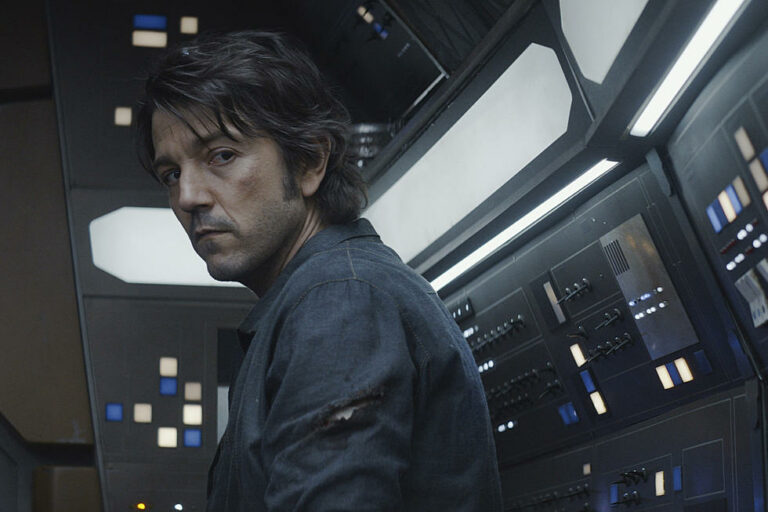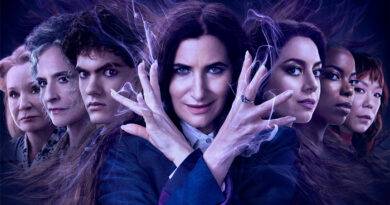
Andor Episode 4 Review
Article by Kieran Burt
This week in Andor audiences see the start of another arc, focussed on Andor and a small band of rebels robbing an Imperial garrison. Audiences are also treated to the first look in Andor, showcasing the planet for the first time in an on-screen appearance since Rogue One. Both the Imperials and Mon Mothma are going through their own political upheaval.
While Andor does pick up from the last episode, this is clearly the start of a new chain of episodes. Audiences now found that he is on Aldhani, a planet that isn’t close to anything, but one that isn’t too far away either. The Imperials have forced the locals to migrate south, built factories, and have dammed the river for their own purposes, taking it away not only as a source of water but also sacred location, for the locals, as the river used to flow to a temple. This is a great way to show the colonialist nature of the Empire, that even on worlds that aren’t particularly important to them, they will still rob its culture and beauty.
Aldhani is home to a cast of new characters, and none are happy with Andor’s presence. While none have had the chance to fully take the spotlight yet, a standout is Karis Nemik. He comes off as very nerdy and innocent, being first introduced as being asleep on guard duty, something that more extreme rebel cells (Saw received his first name drop ahead of his appearance), would behead him for. Nemik doesn’t understand the importance of the role. He is very protective of his model that’s used in the planning stage, and is quick to correct his colleagues when he gets the specifics of anything wrong. The amount of characters introduced at once is a little overwhelming, and the absence of those on Ferrix is felt, especially after how episode three finished.
But where Andor shines this week are the events taking place on Coruscant. Finally, Disney sets meaningful on screen live-action on Coruscant, giving Star Wars fans what they’ve wanted for years. And the planet looks amazing, with the architecture coming off in a more oppressive way than in the era of the Republic, with everything being immaculately sterile, far more so that the capital should be. The high production value really shows here.
It’s here audiences are introduced to the Imperial Security Bureau (ISB), a police force for the Empire, it’s first intended appearance in live action. It’s also a great window into the office politics inherent to the Empire. It first showcases briefings, giving the audience a clue into the types of operations that the ISB are involved in. It’s here Dedra Meero makes her first appearance, an upstart Imperial who wants to increase her power, though is forced to do it through technicalities found in her jurisdiction. This is the type of content that fleshes out an organisation, and makes it feel like a living thing, and not just another branch of the military. Meero’s face makes it clear that she won’t give up this hunt, setting the stage for more power plays.
The corporate police from the past three episodes make an appearance, and they’ve been called to the capital to explain their long list of failures, not least the one the audience witnessed when Karn and his cronies attempted to arrest Cassian. The Empire used this as an opportunity to erode the remaining independence from the corporate police, ready for them to take over the planets that were under corporate jurisdiction. It shows the galaxy wasn’t conquered simply by fleets and armies, but by abiding by complex legal arrangements and exploiting the situation when it’s most favourable.
It also shows the view that Sergeant Mosk has of the Empire is wrong. He is bullish in his thoughts that the corporate police are the first line of defence for the Empire. While nominally that might be so, in reality the Empire don’t want to control the galaxy through intermediaries, they want direct control. Karn is forced back home with his mother, in a touching reunion that adds to the tragedy of his character.
The second thread on Coruscant is the introduction of Mon Mothma. Genevieve O’Reilly introduces us to a Mon Mothma that is “under siege”, panicked at being unable to trust anyone and privately distraught that her work is being undone. She visits Luthen under the guise of buying a present for her husband. Stellan Skarsgård portrays Luthen with a more amenable personality, which is quickly dropped when the pair talk about their budding rebellion, where he returns to his more aggressive self. Neither truly understands where the other is coming from, Luthen doesn’t understand the danger of subtle insurrection, and Mothma doesn’t understand the harshness of insurgency.
Mon Mothma doesn’t get any respite at home either. Her husband doesn’t give her work any respect, organising a dinner and inviting several guests that despise Mothma. At the end of their exchange, he complains that Mothma is always “sad and boring” about everything. Though it’s clear why this would be the case, because Mothma must keep up a charade for most of her life, worrying that she could be discovered at any moment. Even when she is with allies, they don’t seem to care about her delicate situation.
These aspects of the show all build to form an engaging narrative that details the intricacies behind the Star Wars universe, from the buildup of rebels on the ground, the power plays the Empire and its organizations make, and the precarious nature of quiet rebellion. While these threads are setups for the weeks to come, it’s possible that in the short time the arc structure Andor has adopted might hurt it slightly. Where this episode ends feels arbitrary, a criticism that can be extended to episodes one and two. It feels like Andor was made into four films and chopped into thirds. However, this means Andor will benefit from a full rewatch when all episodes of a particular arc are out, and this is only a minor criticism.



